Please note:
The solution is based on the US version of the PC game, so there may be differences from the terms used for the Spanish localization and / or other versions.
Introduction
The founding act of a new city is a crucial moment: small decisions taken in that instant can have repercussions with amplified results in the years to come. In general, there is no absolute best way to manage these first moments. Much depends on the type of city you intend to build, on the presence of other cities in the same region and on the connection of these with neighboring regions. However, there are guidelines with universal value that allow you to avoid a series of small mistakes that can lead you to irremediable bankruptcy or the constant difficulty of raising the necessary funds to support your city and its citizens. In the following sections and paragraphs you will therefore find a series of information to take into account in this delicate initial phase. Before you lay the foundation stone, make yourself comfortable and carefully read our Good Mayor's Handbook for SimCity.
Foundations of the city
Pollution
Cleaning the air is a determining factor that every mayor must take into account, not only for purely ethical or theoretical reasons. An excessive level of pollution in the air in fact produces a series of unpleasant and costly consequences for the city coffers. In fact, pollution is directly linked to the state of health of citizens, and therefore to the level of expenditure connected to the public health sector. But not only that: an unhealthy city lowers the level of happiness of the population, creating the ideal climate for the spread of crime. Also, a city that doesn't bother to keep the air clean will be more prone to rampant fires. On the other hand, however, in the early stages when funds are tight, polluting industries and power plants are the only viable option. A good compromise can then be obtained by taking into account the wind direction in the initial design phase. By pressing the Data View button located in the lower right corner it is possible to access a wind map that is good to keep in mind when dealing with the distribution of the different city areas. The residential areas must therefore be placed upwind, while the industrial ones downwind. In this way, the fumes generated by industries and power plants will be carried away from the winds, guaranteeing breathable air to residential areas, an indispensable condition for guaranteeing a constant growth in population density.
Over time there can be positive or negative changes to this initial situation. The direction of the winds, for example, can change, compromising your strategic layout of the metropolitan neighborhoods. The impact of such a change largely depends on when it occurs. If this happens rather later in time, at that point in the game you should already be able to count on clean technologies that will allow you to be less affected by the weather situation. If, on the other hand, this unexpected change occurs shortly after the initial phase, you could run for cover by building parks to protect the built-up areas, thus exploiting the purifying capacities of the green lungs of the cities.
Connections
After studying the wind, it's time to get down to business. The game asks you for a first action, the creation of a road, the one that will probably represent the backbone of your city, connected to the highway that crosses the region. It may seem like an insignificant action, a stupid decision to make without spending too much time, but it isn't: every micro-decision is important at this stage. In fact, this road will not only be the city access point to the motorway, but will probably also act in the initial phase as the only link between the industrial and residential areas.
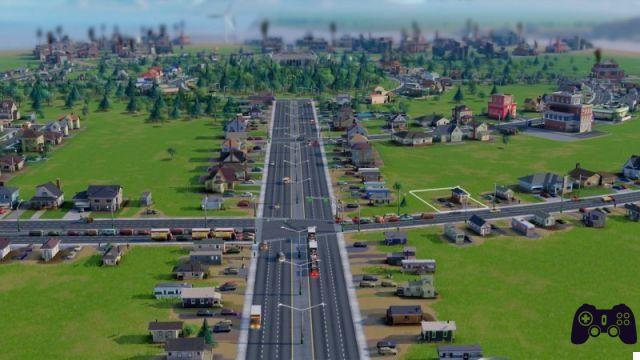
So make sure that it flows according to the direction of the winds, because around it you will soon find yourself deciding the placement of various metropolitan districts. However, don't spend too much money: for the moment this road artery will not have to support a lot of traffic and later in the game you will have plenty of time to carry out work to adapt it to the amount of traffic present in the city.
Quartieri
The next step is the definition of the areas within which the first city districts will rise. It is for the moment the pure definition of the spaces, because lacking the basic services (water, electricity ...) it is not yet possible to host Sims. However, it is good to start creating a physical outline of the project you have in mind. Therefore, starting from the main road traced previously, draw the boundaries of three macro-areas using medium-intensity roads for this purpose: for this initial phase they are more than sufficient and allow you to support without excessive difficulty the traffic that will be created with the first city expansion. In case you want to keep your budget, opt for low intensity roads, but know that you will soon find yourself having to remedy an unsustainable traffic situation. The areas should be graphically presented as rectangles furrowed in the center by the main road. Create two rather large areas, one for the construction of buildings and the other for the establishment of factories, naturally taking into account the wind direction discussed in the first paragraph. Then immediately allocate another area (or two) of smaller extension for commercial structures, positioned close to the living area. Also distance this block from the industrial one: it is true that the wind will play in your favor, but the pollution tends to expand for a certain radius around the point of origin, and you have already had the opportunity to read the negative effects on the population that this social problem entails.
Probably in the future these neighborhoods will undergo changes, even radical ones, but to start they will serve to produce the first income with which to finance the fundamental works for the start-up of city activities.
Basic infrastructure
To keep your Sims from cultivating an annoying bad mood from the first time they arrive in town, you need to guarantee them the minimum essential services. For this purpose you will therefore have to worry about the construction of a power plant, the aqueduct and the sewage system. Therefore, create a low-intensity dirt road that starts from the industrial area, obviously taking care to calculate its position so that the wind does not carry the fumes generated in this area towards the residential area. Then you have to decide whether to build a polluting power plant, coal or oil, or a "clean", solar or wind power plant. In the first case you can place the drainage channel of the sewer network near the plant, in the second you will accompany the plant with a water tower. The polluting structure would in fact end up contaminating the aquifer, while the sewers do not suffer any deterioration from coal fumes. In any case, all three structures - power plant, sewer drain and water tower - are necessary, so after deciding which type of power plant to rely on, and after positioning the most suitable structure to support it, look for an ideal location. to build the third missing element using the analysis of the water table or the pollution map. The reason for these attentions is the need to avoid polluting the groundwater.
If the funds in your possession weren't enough to guarantee the city these basic services, you could consider issuing bonds through which to finance yourself. Once the constructions are complete, don't neglect the details. If you have built a coal / oil power plant you will need to enable access to resources on the global market by checking the appropriate option in the power plant menu. The alternative is to have its own coal or oil extraction program, but some time will have to pass before it can become self-sufficient. Finally, if you are returning from the previous chapters of the game, know that now each road laid also brings with it the water and sewer pipes as well as the cables of the electricity network which, therefore, no longer have to be traced separately.
First expansion
When the basic services have been ensured to the population, the time will come to start expanding the initial core of the city. There is no better or more correct method than others: the only fundamental principle to keep in mind is the influence of pollution, which you can counteract by keeping in mind the direction of the winds. Therefore, enlarge each area sketched previously. To start with, set up at least nine residential districts, making sure to keep the 3: 1 ratio with the commercial areas as constant as possible: therefore, every three residential blocks build a space reserved for commerce. The areas do not need to be bordering or intersected, but it is sufficient to build roads to ensure the comfortable circulation of traffic in both directions.
As far as industrial areas are concerned, at this moment it is important that you commit yourself to following the plan you have set for yourself.
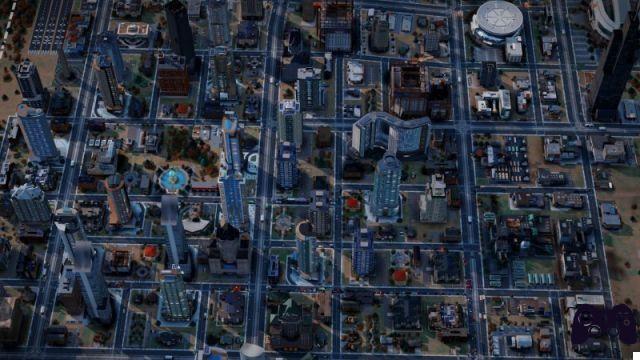
Not that it is necessary to have one, but if you have decided to base the city economy on the extraction of oil you should follow a different industrial strategy than the one that is connected instead to the decision to source oil on the international market. Obviously there is always time in the future to bulldoze your mistakes and correct your shot, but this implies a waste of funds and time that can be avoided with a minimum of foresight in the early stages of the game.
Rome was not built in a day
Ah, how much wisdom in this popular saying! Even your city cannot be built in a day, on the contrary, at this point the best thing you can do is sit back and wait for the internal dynamics of the city to take its course, naturally verifying the impact of the decisions made so far. The behavior to be absolutely avoided, on the contrary, is the compulsive shopping syndrome that leads to the purchase of structures and buildings that are currently useless as a remedy for the boredom of waiting. Nothing more wrong. Rash spending at this point in city development dramatically affects finances, risking irreparable damage that will lead to inevitable bankruptcy.
On the other hand, you can spend your precious time in activities that are perhaps less gratifying in the immediate future, but certainly more useful to the city's splendor. First, take to the streets and observe your citizens. Check their level of satisfaction and if they have any complaints, immediately correct the mistakes they have made during the race: generally in this initial stage the discontent will focus on problems concerning water or energy supplies. Another activity that can be useful to carry out in this phase of relative calm is bargaining with the other players (if there are any, of course) with which you divide the region. In fact, there are several decisions to be made, such as the type of resources to which one wants to rely, which large infrastructures to erect, how to manage the education department and so on. Obviously - and this is a rule that applies to every aspect of the game - good initial planning allows you to tackle the implementation phase without particular headaches. Before moving on to the next stage of the game, make sure your city produces at least $ 1000 per hour. If not, proceed with the progressive expansion of the city areas until this result is achieved. Only when you can count if a constant flow of money in the coffers of the town hall in fact you can start thinking about the more expensive structures.
Discontent and disasters
In order not to scare the new mayors, SimCity provides an initial period of respite in which the new cities are protected from the dangers associated with citizen discontent and natural disasters. The first "immunity" lapses after reaching the first 400 citizens, while the protection against natural disasters "expires" when one thousand units are exceeded. Take this data with a grain of salt, there are no official references to these statistics in the game manual, but the events that occurred in several games have suggested that we take the hypothesis of the double threshold 400/1000 for good.
There is no standard order in which emergencies will manifest themselves, nor an infallible priority scale that can guide you in building the social services that will help make your city safer. Assume that a high concentration of polluting industries, and therefore a high pollution index, are the main causes of city fires. If you have opted for polluting energy sources, then the construction of the fire station must be your starting point.
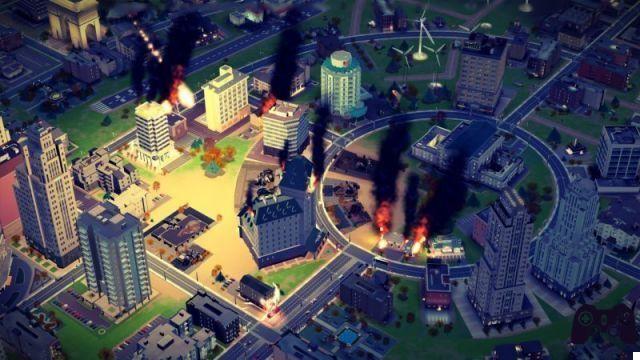
Alternatively, if pollution is not a problem for your city, take care of social tranquility by erecting a police station. These structures are very useful for maintaining city order, but unfortunately they are also very expensive. Do not be tempted by their mass construction, perhaps resorting to a second issue of Bond. The cash flow of your coffers must be constant and never less than $ 1000 per hour. If profits drop, expand the city areas slightly and wait for the new taxes to replenish the city chest. Only when you get back above the $ 1000 / h threshold will you be able to afford another facility.
After securing your fire protection and providing a crime shield to the population, the time will come to think about public health by building a clinic. After that it will be the turn of education and schools. These guidelines may obviously vary in case you have decided to direct your game towards certain specializations. To give a few examples, the major in Electronics requires that education take precedence over everything else.
Sources of income
The steady income of $ 1000 per hour guarantees you a peaceful life. If the slow pace is not a problem for you, you can continue playing for a long time by slowly expanding your city areas, saving a few nestlings to allow yourself a couple of more impressive structures over time, and thus enjoy a placid existence as mayor of a suburban town, known for the peace of its inhabitants and the tranquility of its streets. However, it is difficult to enter the history books in this way.
So if your goal is to increase your sources of income in the medium to long term and start thinking big, now is the time to lay the foundations for a bright future. If your coffers are not overflowing with money, do not despair: for now we must limit ourselves to thinking about the future and setting the course, the action - and the consequent outlay of money - can be postponed. At this point in the game, however, making bad or simply hasty choices begins to prove highly counterproductive in economic terms. Building roads and residential neighborhoods on top of an oil field that you intend to exploit in the future is a waste of resources and time: in fact, in short, you will have to destroy one or more neighborhoods, rebuild them elsewhere, wait for the flow of taxes to resume, all in a time when your portfolio will already be under stress due to the construction of the mining facilities. Better to plan ahead, definitely. In fact, all you have to do is decide what direction you want your future to take - not easy, actually! - and act accordingly. If you plan to dedicate yourself to the extraction of coal or oil, avoid building on the deposits, if instead you want to make your city a monument to culture or gambling, start thinking right now about the large building spaces that the infrastructures connected to these specializations require. Alternatively, you can build your fortune on the needs of the cities surrounding you in the region. By dedicating yourself to the production of an energy or water surplus, or by enhancing your sewage system, you could enter the service business and offer your help to nearby cities, obviously for a hefty fee.
town hall
Buildings housing the city government can be built for free, but they tend to take up a lot of space. Their implementation is not mandatory, but their mere presence tends to increase the satisfaction of the citizens. Study the space available to you and erect the Town Hall in the commercial area, while the Mayor's House can become the flagship of your best residential neighborhood. Along with a positive improvement in density, resulting in an increase in population and tax revenues, you should soon see the arrival of particularly affluent Sims in town eager to settle near the municipal buildings. In order not to over-emphasize social differences, you can embellish other residential areas with new parks.
The worst is yet to come
The acclimatization phase in the city can now be said to be over. From here on you will have to make numerous changes, small or large, to the basic structure around which you have designed your city. Traffic will increase and roads will need to be widened, Sims will have children and need new schools, while the population grows and requires more space. Your biggest problems, however, will often be related to the natural disasters that the game will enjoy unleashing against you, while crime is rampant in the shadows. In this regard, remember that the only sector in which it is not worth saving is that of the police, including in this definition also the firefighters. Try to accumulate some savings and treat yourself to rescue and patrol vehicles in abundance, at the outbreak of the first fire you will be extremely happy with this choice.
ADVANCED ISSUES
Traffic
As you well know, the real problem facing modern western metropolises is traffic. The virtual world of Sim City is not free from traffic jams, traffic jams and clogged traffic. In the case of you virtual mayors, the concerns are double: not only in fact the columns of cars make the population nervous and foment discontent, but they also represent an obstacle for emergency vehicles, thus transforming dangerous situations such as fires and criminal acts into potential catastrophes. .
A first step to take to understand the problem and study its solution is the careful examination of the traffic map. This tool colors city streets green, yellow and red according to the road traffic situation. The map, however, offers a snapshot of traffic, which means that to get a real picture of the problem it should be consulted in the two hottest moments on the city streets, i.e. in the minutes preceding 9 in the morning and those following 17 in the evening. where your Sims set off to work, or return home.
A first solution can be represented by the upgrade of the busiest roads. This actually turns out to be only a temporary remedy, because the density of the road actually refers not only to the amount of traffic it can withstand, but also to the population density of the buildings that surround it. By upgrading the roads, therefore, we can only postpone the new explosion of the problem for some time. The road system, however, can still be made more efficient by studying a network of main and secondary roads that allows you to reach any point by opting for more routes, so as to lighten the main arteries. Instead, a real remedy is represented by widespread and efficient public planning. To obtain good results, you will have to combine several types of transport to meet the needs of the entire population.
Start with the buses. After you have built a bus depot you will have to take care of the arrangement of the stops. In this regard, you should know that Sims are lazy just like real citizens, they can't stand having to cross the street and are willing to give up the car only if they have to travel a short distance to get to public transport.
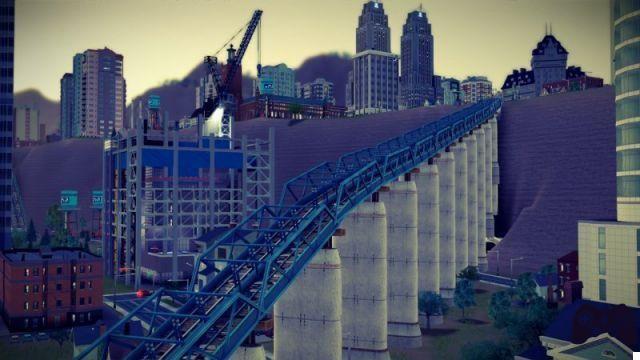
Therefore, you have the stops quite close together on both sides of the main streets of your city, checking the area covered by each stop through the green circle is displayed by clicking on it: do not blindly trust this visual information, the citizens on the edge of the circle are unlikely to they will entrust to the buses.
One of the main flaws of buses is the lack of appeal they arouse towards the wealthiest citizens. To overcome this problem it is advisable to replace buses, at least in the most exclusive neighborhoods, with elegant trams. Unfortunately, this means of transport is famous for an annoying bug that sends their driver haywire near intersections. To get around the catch, avoid that the routes of each line cross each other: keep the lines separate or opt for a series of oval routes and you will immediately notice a substantial improvement in the level of road traffic. However, even the trams have some minor downsides. To start they need large enough spaces to lay the rails and stops. They also cannot cross roads intended for cars, so their routes must be studied carefully. It is also good that bus and tram stops are close enough for commuters to use multiple means of transport to get to their destination. Finally, creating parking lots near the main stops can encourage the use of public transport even for citizens who live further away from the routes covered by buses and trams.
Trains, ferries and airplanes, on the other hand, serve to facilitate traffic within the region. Trains in particular are a very welcome option for wealthy Sims as they make a great substitute for highways. Ferries, on the other hand, serve to connect cities separated by the ocean and allow people to travel (not too quickly, actually), but also goods. Finally, the airports have purely tourist purposes. Obviously, even for means of transport destined to cover large distances, the above argument applies: their stations must be easily accessible through the use of buses or trams. In an ideal city, the Sims must be able to leave the house and, using only buses and trams, be able to reach their workplace, but also the port, the train station and the airport.
Natural disasters
As already explained above, after a quiet start the game will test you with fires and other natural disasters even when your town has yet to touch the threshold of a thousand inhabitants. The fire that rages in a building is not a tragedy in itself, if contained in time. Although it is very rare for a single disastrous event to raze the entire town to the ground, underestimating emergencies and, above all, not being able to count on a network of emergency vehicles ready to intervene can prove to be disastrous, to the point of forcing you to tear down and rebuild from founds entire neighborhoods.
The best way to avoid such fatalities is prevention. First of all, you need to know what the main causes of fire are. Fires tend to flare up mainly in industrialized areas subject to a high rate of pollution, while the scarcity of the water supply contributes to worsening emergency situations by preventing the functioning of anti-fire systems, consequently making rescue operations more complicated and accelerating the spread. of fire. In addition to environmental factors, however, there are also cultural elements to consider. The level of education of the Sims in fact influences dangerous behaviors that can lead to fires, while the presence in the city of arsonists is another factor that must be taken into consideration (see in this regard the following paragraph).
Of course, the best remedy imaginable against the dangers of natural disasters is the layout on the map of numerous fire stations scattered around the city. The buildings surrounding the barracks will obviously not be immune from fires, but will nevertheless be more controlled. To further reduce the likelihood of a catastrophe, you can install the Fire Marshall module together with large barracks, so that the commissioner also takes care of prevention.
In spite of everything, however, some fires will still break out in your city. A building fire follows four different stages. By intervening immediately, both the building and its inhabitants can be saved. Over time, however, the structures will be irreparably damaged, while the Sims inside will suffer more and more serious injuries. If the fire is not put out in time it will even be necessary to destroy the buildings surrounding the burning building to prevent the flames from spreading. Finally, at the final stage the fire will be intense enough to reach other buildings by gushing over the streets and debris of the demolished buildings to form a containment belt. In crisis situations, therefore, it is essential to be able to count on clear roads and a good number of vehicles (fire engines and ambulances, above all) in order to be able to intervene promptly and limit damage.
crime
Even in SimCity, conditions of discomfort, such as low education levels, high pollution rates and scarce attention to public health, tend to generate despair and discontent, thus creating the conditions for a conversion to crime by some citizens. Based on these variables, the game more or less frequently generates criminals (or they may move from neighboring cities). To fight crime, you obviously have to build police barracks. From the police and crime statistics screen - button in the lower right corner - you can find out how many criminals are currently staying in your city, how many arrests are made daily by your law enforcement agencies and how many crimes are committed instead.
To fully understand these statistics it is necessary to know the modus operandi of the SimCity criminal. After his appearance inside a house in the residential neighborhood, the attacker mulls over the criminal action he has in mind until he decides to leave the house, often at night, when he walks towards the place where he intends to commit the crime. .
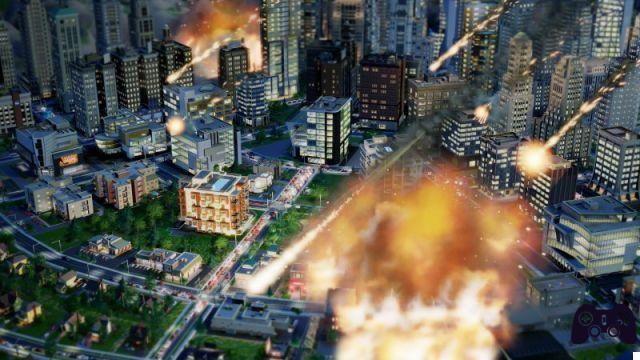
If along the way you meet a police car on patrol, the coward will be seized by fear and will return to his home, ready to repeat his criminal attempt later. If, on the other hand, he manages to arrive undisturbed at the scene of the crime, he will implement his plan. At that point the police barracks scattered around the city will be alerted and the hunt for the villain will begin. At that point, if the bandit manages to return to his home undisturbed, he gains experience in the type of crime he is committed to, making future attempts to catch him more complicated. Reached a certain level, it will begin to infest the neighboring cities with its misdeeds.
The higher the number of fighters around the city, obviously the higher the likelihood of arresting a criminal or preventing his malicious actions. Also in this case, therefore, prevention is better than action. Arrange several barracks, or even better districts, around the city. Purchase the Criminal Prevention Center as soon as possible to teach kids how to stay out of trouble, which is a great long-term solution to the crime problem. If you have the right research projects at the university, you can also equip yourself with detectives who will be able to arrest criminals even inside their homes. Finally, helicopters represent the most effective measure for immediate interventions in the field.
A final mention on the issue of crime must be reserved for prisons. Criminals are held in the barracks cells until they have served their sentences, thus eliminating their crime level. It is worth keeping an eye on the number of free cells and checking that there are always available ones, otherwise the game will free the criminal in jail for the longest time to make room for the newcomer. If the freed convict hasn't finished his rehabilitation period, however, you'll end up with an experienced criminal walking around for every new bad guy locked up behind bars. It won't happen often, but don't skimp on detention forms and upgrade them whenever necessary.
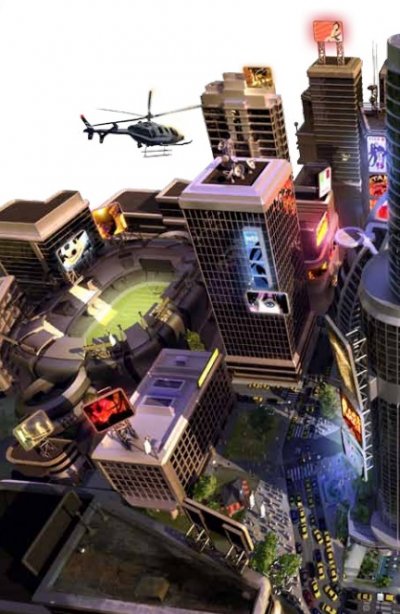 SimCity pc
SimCity pc
- pc
Exit date: March 7 2013






